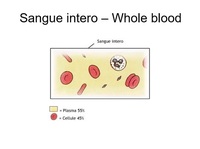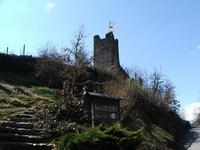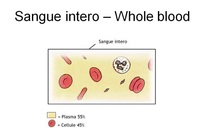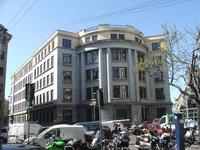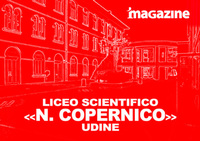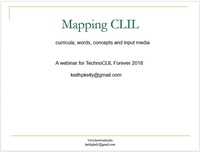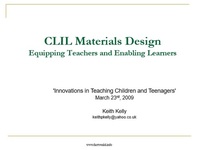Italy
Countries :: Italy
A week of CLIL in Italy
19th-25th March, 2009
Sondrio: in memory of Gabriella Lazzeri - A richer curriculum with CLIL practice
Milan: Saturday morning CLIL with Teacher Trainers - Hot Questions
Milan: YLS SIG / British Council Conference - CLIL: Equipping Teachers and Enabling Learners
Milan: Teachers' Meeting - Science and Geography: Why not in English?
LICEO SCIENTIFICO STATALE
“FEDERIGO ENRIQUES” – 20035 LISSONE (Milano)
Viale Martiri della Libertà 124 – Tel.+39-039-484836 Fax ò39-039-465489
E-mail: licenriq@tin.it
CLIL Lesson - Content and Language Integrated Learning
This is the first experience of CLIL thought of and organised together by two teachers: prof. Laura Azimonti (Biology and Chemistry) and Anna Cassanmagnago (English). The two colleagues want to experience the opportunity to teach a subject in the foreign language the students are studying, in order to challenge their capacity to deal with it in a different context from the one they are accustomed to.
INSTRUCTIONS FOR THE STUDENTS
1) CLIL is am approach to knowledge which favours the use of foreign languages not for themselves, but as a means to communicate knowledge and culture all over the world.
2) We live in a society which is more and more becoming multiethnic and, consequently, multicultural. Therefore it is important for us to acquire the skills to interrelate with other human beings on different topics.
3) Now we are going to hand out the photocopies on which you can see a list of key-words that will help you follow the lesson in the most suitable way possible. We suggest you should go through the list so that you can ask for explanations if needed.
4) After reading the list, you will be given other two photocopies with questionnaires. Before the lesson look at the questions.
· Questionnaire 1 – The items here will be dealt with in this lesson, so you should pay the highest attention in order to be able to answer the questions afterwards.
· Questionnaire 2 – together with question no. 9 of the first questionnaire – will be answered at home.
5) You are allowed 5 minutes to go through the key-words and the questionnaires so that you can concentrate on the lesson content better.
6) Once you have gone through the pages, the science teacher, prof. Azimonti, will deliver the lesson and you are expected to pay attention to it. Of course you can raise your hand and ask questions if you have any doubt or curiosity.
7) At the end of the lesson you are expected to answer questions 1-8 of the first questionnaire. The answers will be checked and evaluated, both for the content and the appropriateness of the language used.
Resources:
Teacher's notes ... click here.
Questionnaires on the topic of blood ... Questionnaire 1 ... click here, Questionnaire 2 ... click here.
Content material on blood, ... click here.
PowerPoint presentation on blood ... click here.
Many thanks to Anna and Laura!!!
Sondrio - In memory of Gabriella Lazzeri
A richer curriculum with CLIL practice
Friday 20th March, 2009
I arrived quite late in Milan Malpensa and wasn't sure what the situation would be like for getting the bus into town, but was pleasantly surprised that there were plenty of buses even at the late hour that it was.
I left the next morning for the station to meet, like a moment from a novel, Maria Cecilia Rizzardi at the platform for the train to Sondrio.
Cecilia came along and we travelled to Sondrio together through the beautiful foothills and lakes of the Alps north of Milan.
In Sondrio I met with colleagues for lunch at the restaurant at the castle above the town.
I met Steve Marsland, who told me the story of Gombrelo Wine and the ‘dark side and the light side of the valley’.
The event was a moving one, and I must admit that I was anxious that I may be ‘imposing’ on the intimate moment the audience (around 200) were sharing about a colleague they all knew, loved and respected. As it was Marcella Fratta, who invited me to speak, explained that Gabriella would have wanted an educational event rather than just an emotional one.
It certainly was a memorable event.
I spoke about CLIL: Enriching the Curriculum.
From what I learned about Gabriella, I like to think we would have got on well. As an innovator, a mover and a shaker, I think Gabriella would have embraced CLIL.
In Gabriella's memory a cultural and educational association has been set up to fund special projects and give opportunities to young people in education.
The Associazone Culturale 'Gabriella Lazzeri'.
Many, many thanks to Marcella and colleagues for involving me in this event. I wish them success.
LICEO SCIENTIFICO STATALE
“FEDERIGO ENRIQUES” – 20035 LISSONE (Milano)
Viale Martiri della Libertà 124 – Tel.+39-039-484836 Fax ò39-039-465489
E-mail: licenriq@tin.it
CLIL - Content and Language Integrated Learning
This is the first experience of CLIL thought of and organised together by two teachers: prof. Laura Azimonti (Biology and Chemistry) and Anna Cassanmagnago (English). The two colleagues want to experience the opportunity to teach a subject in the foreign language the students are studying, in order to challenge their capacity to deal with it in a different context from the one they are accustomed to.
INSTRUCTIONS FOR THE STUDENTS
1) CLIL is am approach to knowledge which favours the use of foreign languages not for themselves, but as a means to communicate knowledge and culture all over the world.
2) We live in a society which is more and more becoming multiethnic and, consequently, multicultural. Therefore it is important for us to acquire the skills to interrelate with other human beings on different topics.
3) Now we are going to hand out the photocopies on which you can see a list of key-words that will help you follow the lesson in the most suitable way possible. We suggest you should go through the list so that you can ask for explanations if needed.
4) After reading the list, you will be given other two photocopies with questionnaires. Before the lesson look at the questions.
· Questionnaire 1 – The items here will be dealt with in this lesson, so you should pay the highest attention in order to be able to answer the questions afterwards.
· Questionnaire 2 – together with question no. 9 of the first questionnaire – will be answered at home.
5) You are allowed 5 minutes to go through the key-words and the questionnaires so that you can concentrate on the lesson content better.
6) Once you have gone through the pages, the science teacher, prof. Azimonti, will deliver the lesson and you are expected to pay attention to it. Of course you can raise your hand and ask questions if you have any doubt or curiosity.
7) At the end of the lesson you are expected to answer questions 1-8 of the first questionnaire. The answers will be checked and evaluated, both for the content and the appropriateness of the language used.
Resources
Teacher's notes ... linked at the foot of this page.
Questionnaires on the topic of blood:
Questionnaire 1 ... linked at the foot of this page,
Questionnaire 2 ... linked at the foot of this page.
Content material on blood, ... linked at the foot of this page.
PowerPoint presentation on blood ... linked at the foot of this page.
Many thanks to Anna and Laura!!!
LEND CONFERENCE - Italy
Lend had their latest Humanism in Language Teaching Conference – Portonova 2006 in Ancona, August 28th to August 31st 2006.
The conference was held in the beautiful resort of Portonova, close to Ancona.
Some of us were fortunate to stay in the delightful Napoleonic fortress Hotel Fortino where we were treated to song, dance and food of the kind only the Italians know how to produce, to a backdrop of the Adriatic doing its thing.
http://www.lend.it/italia/
The programme on offer was packed with renowned practitioners of Humanistic language teaching and related areas with plenaries and workshops from: Mark Almond, Stephanie Dimond-Bayir, Donald Freeman, Izabella Hearn, Susan Norman, Mario Rinvolucri, Penelope Williams.
My own plenary and workshop themes on English-medium education seem a little dry in comparison to Stephanie’s ‘Breathing life into literature’, or Mark’s ‘Dramatic openings: The What, Why and How of Drama in ELT or Mario’s ‘The 100% student autonomy of listening and reading’, to name but a few of the wonders of the conference.
The truth of the matter is that integrating content and language is now a reality all over Italy and EFL colleagues there are keen to find out what it’s all about if they don’t know and look into materials development and task design if they do. This would explain the 60 people coming to my workshop on this issue and the 200 or so at the plenary.
Plenary CLIL: supporting language in English-medium education.
Is teaching anything in a foreign language now called 'CLIL'? Content and Language Integrated Learning is becoming more and more popular with both language and content teachers around the world. This growth has led to an expansion in the number of approaches being offered to teachers, the courses available and generally the interest in this area of education, though little in terms of published materials for teachers. What exactly does good CLIL practice entail?
What exactly does it mean to support language in content education?
This paper offers the premise that CLIL is defined by the explicit provision of language support to learners of foreign language content. This plenary will look specifically at the provision of ‘language support’ and offer a working definition for this term. Participants will see a wide range of examples of content materials from around the world and the language demands teachers have identified as well as the subsequent 'language support' activities they have produced.
Workshop CLIL: materials writing for language support
If you were given a sample text, or visual from a content book on, say, Chemistry, could you plot the language demands this material would entail for any given group of learners? Would you be able to create a task which supports the language identified either through guiding learners through a listening, or a reading, or with provision of support for learners to reproduce the language in their own words?
Participants at this workshop will be presented with sample ‘texts’ from a range of subject areas and they will explore two areas: identifying language demands in content texts and task production for language support.
During the workshops colleagues were asked to take a look at a selection of content texts and materials and consider the language demands of these resources for foreign language learners of English
investigating texts
… are made up of…
… organized in…
… is a self-contained unit
…release…
…connects…
…has the function of…
…builds up…
…includes…
…is located under/around…
…is most abundant under…
…is common in…
…there are …
…have various shapes…
For example, colleagues were given a text on cells and asked to underline cells which describe ‘structure’, ‘function’ and ‘location’ of cells in the text. The teachers found verb phrases such as those in this box. Colleagues were then asked to organise their verb phrases into families with headings, structure, function, location. When the group had finished they had produced a ‘language support’ sheet not only for Biology, but also for any context students may be asked to talk or write about structure, function or location. It turned out that there were other phrases too, such as those for describing ‘types’, and adverbial phrases such as ‘tends to be’.
structure, function and location verb phrases
The teachers were also asked to carry out text sorting activities as a focus for a discussion on ‘reorganising’ knowledge in text and the role of the CLIL teacher in identifying generic structure in texts and where the textbooks do not provide frames to guide students in their reading, the suggestion is that teachers of CLIL should be creating their own.
sorting knowledge in text
The text teachers were given to sort was on coal as a source of electricity which had the colleagues consider the arguments and make decisions about these arguments and place them under a number of headings in a tree diagram formation.
An interesting issue was the use of the mother tongue in the discussion process in groups. There was unanimous agreement that this was acceptable since it was the thinking which was important at this stage and so learners should be left to choose which language they could deal best with the thinking.
(Strong, J. 2001. Literacy Across the Curriculum. London: National Literacy Trust/Collins)
Another example given here is the ‘Diet and disease’ text from the ‘What did you eat?’ pack of useful schools’ web-based exchange programme (www.scienceacross.org) Science Across the World. The text, in two columns, is in linear form with headings in bold and paragraphs. This time the colleagues were given the task of identifying a generic diagrammatical structure for the text to act as a frame for information transfer activities which would guide reading. The creative suggestions for the types of diagrams which could be used were endless, but there was broad agreement on the generic structure which was something of a combination of a tree diagram and a series of flow diagrams which looks like a table but only because the flows are placed one on top of the other. Students could be given the task to read the text and put the information in the correct place, or they could be given the chunks cut up on separate pieces of paper and given the same task as with the ‘Coal’ text above where they sort out the chunks into the correct places.
There was much discussion on the importance of these kinds of instruments for learners to have in their English-medium content work. These language support sheets and diagrams help learners both filter content and construct content sentences and at the same time enrich their language and take students beyond the safe, simple but correct sentence structure they may employ otherwise. They structure the learner’s production of the academic language of the content subject. These instruments are good examples of the ‘scaffolding’ referred to in the work of Jim Cummins (http://ww1.iteachilearn.com/) which is so sadly lacking in much English-medium content teaching.
Another area of focus at the workshop was ‘dealing with data’ with an example table of statistics looking at ‘Injury Death in Children in Europe’.
As above the colleagues had to predict what the language would be for the learners to produce sentences based on the data and then look at how they could transform the sentences they had predicted into a substitution table which could be given to FL learners using such data in their lessons. The data used was from the Keeping Healthy pack, again from Science Across the World a section of which is given above.
All 60 participants at the workshops were given the chance to sign up to the Science Across the World programme (www.scienceacross.org) free of charge and the take up was very good. The colleagues were also keen to join the FACTWorld network (www.yahoogroups.com) and begin to communicate with the 2500+ members in the group.
We couldn’t look at Science Across the World without carrying out some of the Science Across programme classroom activities which make it the biggest web-based internet exchange programme in the world.
Colleagues had to carry out a survey of the ‘variation’ in their group and looked at hair colour, eye colour, height, tongue rolling ability, taste buds, middle finger hair, earlobe shape.
In their groups colleagues investigated the variation in the group and prepared and presented their results in the form of a one minute poster presentation.
Again, the focus was on how to support language production in such an activity. Phrase sheets, presentation frames, sentence starter sheets, language wall posters, subsitution tables were all suggested.
There were a number of significant outcomes from the the couple of days at the conference in Ancona. Firstly, it’s clear that ELT in Italy is paying a lot of attention to CLIL given the interest from the participants at this event. Additionally, among the exhibitors there was a publisher (Zanichelli) with two recently produced books for CLIL in Italy, one to do with the Universe and the other focusing on Geography and Art. I had fascinating conversations with colleagues and co-presenters about integrating Drama and Content through the medium of English and discussed the question of whether or not it was time that there was a large conference which brings together both ELT practitioners and content teachers who work though the medium of English to share persectives. ‘Humanism Across the Curriculum’ may be a good place to start thinking. Lastly, there will be a national Lend conference in Bologna in October next year and it’s likely that CLIL will play a large part.
Keep an eye out for Italy, there is a lot happening in CLIL!
Thanks to Valeria and colleagues.
Milan Teachers Meeting
Tuesday 24th March, 2009
Science and Geography - Why not in English?
Gisella Lange asked me to prepare a talk on the theme of teaching Science and Geography through English.
One of the reasons for this is the recent publication of the two vocabulary practice books and CDs from Macmillan, but also because these two subjects tend to be the most popular taught through the medium of English.
![/userfiles/files/milan-clil-tt-week30.jpg [/userfiles/files/milan-clil-tt-week30.jpg]](/userfiles/files/milan-clil-tt-week30.jpg)
Amazing architecture for public buildings, our venue the Instituto Technico Carlo Cattaneo
I'd like to say special thanks to Gisella Lange for the opportunity to come and meet such a wonderful group of enthusiastic and interested colleagues. I have to say that Gisella's network of trainers, teachers and schools is very well connected. They seem to be well informed, well in tune with what is going on and demanding to know more!
Colleagues arriving for the two-hour talk. We had a number of dignitaries from the local ELT world in the audience too!
It was quite amazing to have over 70 teachers turn up for the interactive talk on the subject. All the more so because the Milan YLS SIG conference was running at the same time.
Gisella Lange opening the proceedings.
Gisella gets us started and announces the freebies provided by Macmillan for the event. Many thanks to Macmillan. Not least for the free subscription to the Onestopclil website which roused interest.
For me it really is a question of 'Why not?' You may be justified in asking 'who on earth do you think you are?' Well, I'm just convinced of the value of teaching the curriculum through the medium of a foreign language. You could change the title for me to say 'why in a foreign language?' I'd be delighted to be involved in French, German, Russian, Spanish, Bulgarian, or whatever language is the medium of instruction. It's all good if you ask me.
There is a link to the PPT (it is 8mb) at the foot of this page.
I always think of my own school when I think of the value of working through English. Students from the EDS Plovdiv graduate extremely fluent in foreign languages.
We have to make some assumptions if we're going to teach Science and Geography through English.
Aspects of aural input in Science and Geography
Example topic for aural input
Using visuals to guide listening
Similarly we can use diagrammatical organizers to guide reading
example of Venn diagram for guiding reading
It's useful for teachers to 'see' structure in texts
This helps in task design
aspects of oral production in Science and Geography
aspects of written production in Science and Geography
Let's not forget Vocabulary
Simple conclusions, like the assumptions at the beginning
Some of the wonderful areas of content up for grabs
I always invite colleagues to keep in touch with me post events. I feel that here my invitation actually got through and that a number of colleagues will be in touch. I may even be able to get a return visit (will take my family with me!) to Milan and the region.
Carlo Cattaneo, Italian philosopher, writer and patriot
Milan Trainers
Saturday morning CLIL with Teacher Trainers
Hot Questions!
Gisella Lange asked me to lead a session with her intrepid group of trainers and I have to admit to having felt a little anxious about it.
After all, the group of around 15 teachers and trainers are probably some of the most experienced in CLIL projects in Europe.
I needn't have worried. It was a terrific experience. I knew some of the group personally as well and it's always a plus to have a friendly face in the crowd.
As it was we had a healthy debate around the many 'unsolved' issues to do with CLIL.
Here are some of them.
Instituto Technico Carlo Cattaneo where we met
General questions:
§ Is there a worldwide or Europe survey on the outcomes of the CLIL approach?
§ The future of CLIL?!?
What is CLIL is what is not CLIL? What are the “cons” of the CLIL approach?
§ Can CLIL become a threat in countries where the native language is not strong? Could CLIL eventually lead to the loss of those languages?
§ What about the role of language teachers in the future of CLIL? Will they be able to work on it or is it going to be a content teachers’ domain?
§ Can we try and define what content is? CLIL vs ESP?
Moreover our trainees often ask these kinds of questions:
§ If we perform a Shakespearean play, would that be considered CLIL?
§ What if I teach ITC in English? Would that be a CLIL or being ITC a language itself it can’t be considered a real CLIL?
§ If we work on narrative texts such as the fairy tale for primary school, would that be a CLIL?
§ Are we sure that in CLIL contexts the content is acquired as it would be in the native language? Is there any evidence of it?
We met in a resource room where Gisella tells me she and her team meet regularly. Gisella had prepped me with a list of issues which are continually raised in her work and the work of her trainers and teacher network.
This was a welcome opportunity for me to simply discuss with peers a number of important areas of education. CLIL has become such a buzz word that it was welcome for me to give my opinion on some of the questions which I hear about, which I know colleagues are discussing and some are unsure where to stand. You can download my slides here.at the foot of the page.
Another plus was the croissants and chocolates!
It's a great shame that the Italian government is cutting back funding for development in CLIL.
These colleagues are left out on a limb, still as enthusiastic as ever, thank goodness for that, but with less support.
I still think they are doing a great job! I'll be back here to help.
We have the idea to begin writing curriculum documents for specific subjects which actually identify necessary language within the documents themselves.
Thanks to Fabrizio already for the expression of interest!
That's for another blog.
The Second Seminar for Content and Language Integrated Learning
LICEO COPERNICO, via Planis 25, Udine, Italy
11-22 OCTOBER 2004
When the first seminar was held in the charming town of Udine in Northern Italy in 2000 it involved 30 teachers. At this meeting there were more than 250 teachers participating in the two weeks of courses representing:
Physical Education, Political Economy, Law and Economics, Economic Geography, Maths, Business Economics, Italian History, Physics, English, Building Technology, Chemistry, Electrotechnology, Automated Systems, Technology, Design and Electronic design, Philosophy and History, Informatics, Applied Maths, Italian-Latin, Materie letterarie, Philosophy, Drawing and History of Art, Agrarian Science, Biology, Mechanical Technology applied to engines, Electronics laboratory, Information elaboration and transmission systems, Electronics, Industrial automation systems, Dental laboratory, Earth Science, Biotechnology systems, Psychology and Science of Education, Psychology Pedagogy, History and Social Science. There was also a support teacher - History of Art, a boarding school educator and a teacher of Zootechnics.
![/userfiles/files/It-CLIL-Ud1.jpg [/userfiles/files/It-CLIL-Ud1.jpg]](/userfiles/files/It-CLIL-Ud1.jpg)
Liceo Scientifico ‘Copernico’
Additionally, there were a group of 25 colleagues working as coordinators for their CLIL colleagues in their respective schools.
Our intrepid hostess Elisbetta Bernadini worked wonders in bringing such a broad collection of teachers together, and simply arranging the timetable so that it would work effectively to meet the specific needs of the colleagues. Both John Clegg and I had our work cut out for us to provide for the diversity of teaching context within which these teachers work.
Most of the success of the programme was down to the enthusiasm of the colleagues present and on our part we offered a general structure covering the following areas:
- Analysing teachers’ needs
- The Language of Thinking
- Integrating Content and Language - Providing Structure and Support
- Tasks for supporting learners language skills
- Presentations of teacher-prepared tasks
- Observing and describing good practice
- Networking
- Resources/CDs/Websites
- Teacher Talk
- Assessment for CLIL
![/userfiles/files/It-CLIL-Ud2.jpg [/userfiles/files/It-CLIL-Ud2.jpg]](/userfiles/files/It-CLIL-Ud2.jpg)
Colleagues trying out a ‘running dictation’ for CLIL
We spent a lot of time working on ‘sharing’ and ‘networking’ and, given the large numbers of teachers, looking at how these colleagues could support each other in their specific subject areas.
All of the colleagues were enthusiastic about joining up to the FACTWorld network (www.factworld.info) and yahoogroup. A large proportion of them were keen to investigate what Science Across the World (www.scienceacross.org) could offer their English-medium subject teaching.
![/userfiles/files/It-CLIL-Ud3.jpg [/userfiles/files/It-CLIL-Ud3.jpg]](/userfiles/files/It-CLIL-Ud3.jpg)
Colleagues discussing ‘language support’ activities
The teachers were mixed ability in terms of language level, their experience in CLIL and also in terms of their teaching approaches. PE through the medium of English, obviously, represents a totally different context to, say, teaching Latin through the medium of English. These teachers were all in agreement about one thing, and that is the value of teaching some, or all, of their subjects through the medium of English.
A number of the schools in the network have their own websites with CLIL links and some of the materials from this workshop can be found at the Liceo Copernico website (http://www.liceocopernico.it/) in the RETE CLIL link.
Some of the schools in the network also have CLIL links in their web pages and it’s worth the search through the Italian to locate them for the materials available there.
I.T.I. “A.Malignani” School, Udine
www.malignani.ud.it
The Friuli Venezia Giulia education archive
http://www.regione.fvg.it/rafvg/cms/RAFVG/
I.T.C. "Antonio Zanon" School, Udine
http://www.itzanon.gov.it/
Along with the networks of CLIL teachers in Lombardia and Piemonte I think this must be the largest group of colleagues I have had the pleasure to work with and they have a lot to share and offer other colleagues interested in this area of language education. You can see the full version of this report at the FACTWorld website give above as well as links to some of the materials we shared in the workshops. You might like to join them in FACTWorld at www.yahoogroups.com and hear about their work. Or, you can write to me and I’ll let you know how to get involved.
Mapping CLIL
Introduction - Seeing the bigger picture
Some colleagues are attracted to CLIL 'projects', small-scale time-bound activities which they can slot into their curriculum. These CLIL projects offer a refreshing supplement to the 'regular' curriculum. We're not going to talk about that approach to CLIL.
I'd like you to imagine that you are sitting with your curriculum document for the year to come. It's late Summer and you are preparing for your classes. Open the document and turn to the first unit of work. What you are likely to be looking at, if indeed your Ministry of Education provides such curriculum guidelines, is a section heading, sub-topics and aims and objectives (outcomes and how to get there) and within each sub-topic aims and objectives there will be information about new concepts and there may be descriptors of skills. The skills may even be divided into categories, such as subject-specific (e.g., 'science skills), creative thinking skills, critical thinking skills, and if it's a very modern curriculum, it may even have 'life skills' or 'soft skills'.
What the document is NOT likely to include beyond key terms (epithelial, muscular, nervous etc), is lanugage needed to help meet the demands of the aims, objectives, and skills.
The first thing to do, is immediately add a column to that curriculum document unit of work and call it 'useful language'. Add a second column and call that 'activities' or 'procedures'. In the empty boxes you now have in your curriculum document, begin to audit your subject for key language.
Key Language
There are three layers of language that a teacher can pay attention to in preparation of lessons: subject-specific language, general academic language, and peripheral language. The subject-specific language pretty much takes care of itself in terms of the curriculum guidelines. Biology teachers 'know' what specific terms they have to teach in a given unit. This language is frequently 'visible' in the textbooks, may be bolded on the page, and may be listed in a glossary at the back of the book. General academic language, on the other hand, tends not to be so obvious in the subject unless the teacher does something to make it visible. The language of 'cause-effect' is essential language in many areas of the curriculum and making note of some of this language, in order to strategically plan how to integrate it into lessons and activities is at the heart of a CLIL approach. Lastly, peripheral language, is the language of the classroom, the organisation, the 'chat' of the classroom which it may also be useful for the teacher to 'monitor', 'moderate' and plan for strategically.
![/userfiles/files/technoclil-mapping-geog-vocab%281%29.jpg [/userfiles/files/technoclil-mapping-geog-vocab%281%29.jpg]](/userfiles/files/technoclil-mapping-geog-vocab%281%29.jpg)
Using mindmanagersmart to create a map of two year's of Geography vocabulary
Activities / procedures
Let's face it, every lesson on the same topic could be delivered in a very different way. All teachers have their own preferences, their own styles. But, in a CLIL curriculum, there needs to be a strategy where language is linked to what happens in the classroom. To give an example, the best way for a class to learn how to use 'cause-effect' language in a science lesson is for there to be activities which 'make' the learners use this language. Now we are narrowing down the options, we can begin to talk about 'how' we 'make the learners use this language'.
Guiding input and supporting output (use structures to help learners process text, process input media), provide scaffolding for supporting learners to speak and to write. Collect as many examples as possible of these, and list them in your empty boxes.
Now take a step back from your curriculum document for a moment.
Imagine having all of this language audited and all of these procedures listed for the entire curriculum document. You will now be holding a CLIL curriculum document for your subject.
Step back further.
Talk to your colleagues, department heads, school management about what you have done. Share information about what language is common and where in the different subject curricula. Now do this up and own the age range as well. Plot and rearrange curriculum topics so that language and skills (procedures) are 'joined up' across the curriculum. Get everyone to do the same across the entire school curriculum. What you will be doing now is mapping CLIL across the school curriculum. When cause-effect language now appears in Science, it will also make sense for, say, Geography. This same cause-effect language now appears in the English language curriculum, perhaps just before it does in Science so that learners are more prepared for the work they are about to do in Science.
Now, your school is on the same journey, and everyone is using the same map.
What I'd like to do now is look at the above in more detail, and giving examples of 'mapping' in different areas of the curriculum subject areas.
1 mapping subject-specific terminology
Begin mapping your subject-specific terminology. The benefit of giving your students maps of key terminology from your subject is that you give them a 'basis' on which to build their subject language. The maps can also be used for annotating in other languages. Give your students access to the software, and encourage them to edit the maps with their own content terms (colour, shape, symbols, sound, video).
Encourage self-study using the maps (compare this with an approach which asks learners to write out new words x times). Offer techniques for learners to memorise maps. The map is highly learner-friendly and learning-friendly.
Put all your terms into Quizlet lists and give a homework for your learners to work on the week's list on their smart phone, tablet, laptop etc at home, on the bus, at the bus stop.
![/userfiles/files/technoclil-mapping-quizlet-lists.jpg [/userfiles/files/technoclil-mapping-quizlet-lists.jpg]](/userfiles/files/technoclil-mapping-quizlet-lists.jpg)
Build the maps and lists once, use as many times as you like.
2 concept maps and general academic language
Concept maps like those at 'cmaps' allow users to embed general academic language in the branches of maps, unlike mind maps which just have 'cells' populated with language items.
Once you have audited and mapped the general academic language of a sub-topic in your subject, consider how you can combine the subject-specific language with the general academic language in a reference resource for learners to turn to in order to check that they do actually know what they are expected to know in your curriculum document.
![/userfiles/files/technoclil-mapping-human-organism.jpg [/userfiles/files/technoclil-mapping-human-organism.jpg]](/userfiles/files/technoclil-mapping-human-organism.jpg)
Concept map on human organism
3 curriculum maps
The three dimensions of CLIL are language, procedures and concepts. Curriculum guidlines for CLIL must be designed in 3D.
A 'music studio mixing desk analogy', or 3D CLIL, allows teachers to make considered decisions about how much attention they pay to the language, the procedures and the concepts depending on where their students are at any given moment in their learning and in the subject curriculum.
Highlight concepts, procedures and language in your curriculum tables, link them to tasks, make decisions about language here initially.
Heidi Hayes Jacobs in the US writes about the 'joined up curriculum' and Geri Smythe in the UK gives guidance to teachers for designing curricula with EAL learners in mind.
![/userfiles/files/technoclil-language-in-curriculum%281%29.jpg [/userfiles/files/technoclil-language-in-curriculum%281%29.jpg]](/userfiles/files/technoclil-language-in-curriculum%281%29.jpg)
A language audit feeds into the curriculum guidelines
4 concept structures
Another interesting way of looking at maps is to consider how you can map concept structures for use in tools during lessons. These tools can be used for both 'guiding input' and / or 'supporting output'.
Identify ideas 'maps' in subject texts and in multi-media content to guide your students through lesson input content.
Identify ideas structures and embed key language in these structures to support your learners in speaking and writing in your subject.
![/userfiles/files/tigtagclil-ideasstructur%281%29.jpg [/userfiles/files/tigtagclil-ideasstructur%281%29.jpg]](/userfiles/files/tigtagclil-ideasstructur%281%29.jpg)
Ideas structures like this one on 'natural and synthetic materials' from tigtagworld clil, can be used to both guide input and support output
Take a look at tigtagworld clil for lots of ideas for instruments based on structuring content for 'guiding' and 'supporting' learners.
Conclusions
What we've looked at in simple terms is the 'big picture' of organizing learning in a CLIL programme. We've looked at the curriculum guidelines as a starting point for auditing language (3 layers) and for highlighting key procedures (activities) which respect the three dimensions of CLIL: concepts, procedures and language. We've looked at mapping subject-specific language, and the maps as a self-study tool (along with Apps like Quizlet) for learners. We've considered concept mapping for producing pictures of ALL the language in a unit of work. We've also looked in closer detail at maps of content ideas and structures and how they can be exploited to guide learners through input content, and support learners with their own spoken and written content output.
All of the above is at the heart of the course - Putting CLIL into Practice to be held at Plovdiv Medical University, July 9th to 13th, 2018.
((Also, if you register for our course in Plovdiv through Erasmus+ or with other funding, you can send me your materials, texts, and I will incorporate them into the course content - https://erasmus.mu-plovdiv.bg/en/putting-clil-into-practice-course/course-information/. This way, participants on the course can be sure that we will be working on materials useful for teaching back in their schools.))
My slides from the webinar are given at the foot of this page.
There is also a recording of the talk, which can be viewed online (though I can't say how long it will be available, so get it while it's hot!)
![/userfiles/files/mappingcliltalk-recording%281%29.jpg [/userfiles/files/mappingcliltalk-recording%281%29.jpg]](/userfiles/files/mappingcliltalk-recording%281%29.jpg)
YLS SIG / British Council Conference
Milan, 23rd - 25th March 2009
'Innovations in Teaching Children and Teenagers'
Presentation title: CLIL - Equipping Teachers and Enabling Learners
It was great to the at the conference, one of the main reasons was that it was such a big and important event and so to have a slot on it was a great platform.
The conference centre was in central Milan
(Click the map to see what was in the conference programme)
Conference building - Centro Congressi Fast
Have to say thanks to Macmillan for having me at the conference at their expense. Many thanks, also for partnering up with Gisella Lange so that my visit could be maximally useful for other colleagues outside the conference!
Flier for the talk
Silvia talks to colleagues at the Macmillan stand
Gisella Lange gave a plenary on the area of 'innovation and creativity' in education
Science and drama
Richard Johnstone
Richard gave a plenary on Content & Language Integrated Learning and interestingly mentioned that he doesn't use the term CLIL. He prefers to be specific and use terms which descibe exactly what is going on in the classroom such as 'delayed total immersion', for example. Bravo Richard! Someone telling it like it is.
Models of content and language integration
Colleagues arriving and finding a spot
One of the things I like to go on about is that CLIL is ideally about equipping teachers to best do their work and enabling learners to perform in a foreign language in a content area.
This was a good chance to explain what I'm going on about.
It was also with a slant towards ICT, as this was a major thread of the conference.
You can download the whole PPT here
(please refer to where you found it if you use any of it!)
I like to show these simple pieces of software for analysing text for language, use and frequency.
SWF - Searching for Words in Files
Searching for Words in Files
SCP - Simple Concordancing Programme
www.textworld.com/scp
They are both freely available (and the Gutenberg project is one place where you can find copyright free texts of famous books).
You can make useful analysis of texts if you have them in electronic format such as this list of the top 100 words in a secondary integrated science textbook.
You can create documents of specific words contextualized in their original sentences.
I showed a number of mind maps using software you pay for or free software like this one for concept mapping. The great thing with this is you can add verbs to the branches.
I talked about embedding language in PPT handouts to support presentation work.
This is an example of general academic language embedded within a powerpoint template for a talk on 'planets'.
We talked about embedding language in video by using subtitles.
And, of course, we talked about the CLIL debate which is ongoing and which will be at the Cardiff IATEFL conference soon with a panel discussing the theme.
I know what I think, more content please, lots more.
You can vote at the www.onestopclil.com site and via the Guardian Weekly and the British Council. Give your opinion in the discussion forum at onestopclil.
This conference has put CLIL back on the ELT agenda in Italy in a big way. It's a great signal to send to the government which seems to be pulling its support.
Good luck to colleagues in Italy, keep up the good work!

